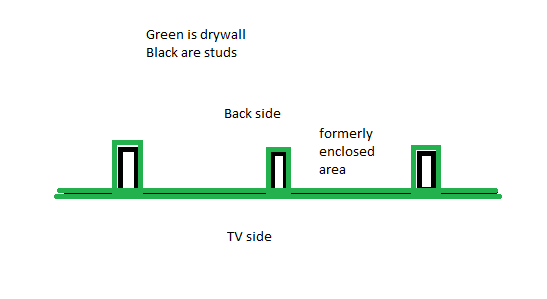Location: AZ, US
I'd like to mount my TV along with various game systems to a wall and hide all or most of the wiring and power bricks. As I have clear and easy access to the other side of the wall (which is the dining room), I had thought of electrical access covers on the back side to easily access and run the wiring hidden in the wall.
Problem is that I know I'm not allowed to run a 120v cord through a wall (I did find that there's a "loophole" with lower voltages eg: after a power brick). I very much care about not burning my house down, so is there anything you guys can suggest for this? My only thought is to try to determine what makes something "inside a wall" and work around that.
For example, can I (theoretically) drywall around the studs on the back side (so it'd look like the image when viewed from above) and run the cables straight through the drywall on one side out the drywall on the other (think of it like two layers of drywall rather than drywall with space between) and make or utilize a box of some sort to contain them?
Note: I have no problem running actual wiring myself - I'm just looking to make this solution as clean and easy to maintain as possible.




